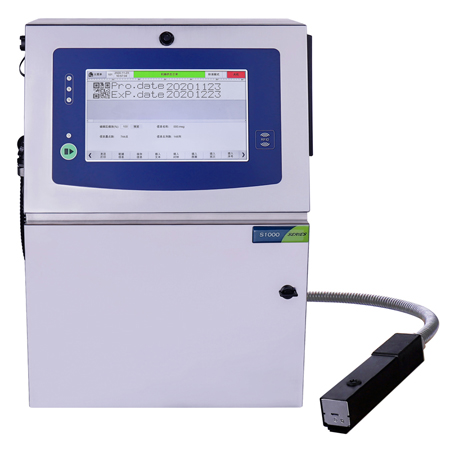A Buying Guide for Continuous Inkjet Printers
Your continuous inkjet printer of choice will remain on your assembly line for a while, so you'll want to invest in a machine that matches your particular application and that won’t cause inconveniences in the long run. Here's a continuous inkjet printer buying guide that you might find helpful.
How Continuous Inkjet Printers Work
Continuous inkjet printing is a popular coding and marking option for countless companies nowadays. A non-contact coding process and a wide range of available ink allow CIJs to print onto various substrates.
During operation, CIJs expel electrically charged droplets of ink from a printhead nozzle. A piezoelectric crystal breaks the initial ink jet into drops. Then, an electrode charges the drops which are required for printing while the other drops are recirculated into the ink stream. The selected droplets then pass through an electrostatic field. Together with the droplets’ speed, the charge from the electrode determines where the codes and marks will be printed on the substrate. CIJs often expel up to 120,000 charged droplets a second.
All of this occurs without the printer directly touching the substrate, eliminating any risk of damage to the printing surface. This automatically gives CIJ printers an advantage over contact coders. Also, because CIJ machines use external ink tanks instead of traditional cartridges, these industrial printers are capable of putting out thousands of pages before needing refills, and they do not produce waste from cartridge replacements. This renders them cost-effective and even eco-friendly.
On top of that, the ink for CIJ printers is available in numerous colors and contrasts. Machines that fall under this type can print onto irregular products and produce readable marks on high-speed lines.
To give you an idea of just how flexible these machines are, here are a few examples of what CIJ coders can print:
● Text on printed circuit boards
● Date codes on the bottoms of glass bottles and on the insides of bottle caps
● Serial numbers on wooden panels and metal sheets
● Expiry dates on the foil packaging of tablets and pills
● Wire size and type along the length of a cable
● Barcodes and serial numbers on car parts
● Specifications and manufacturer logos on plastic piping
● Wattage information and model number on the side of a lightbulb
No matter what you’ll be coding, you can maximize the advantages of a continuous inkjet printer by making an informed and well-planned purchase. This includes asking the right questions and taking your exact business needs into consideration. Here are 9 guide questions for when you start looking for your company’s new continuous inkjet printer.
Questions to Ask When Buying a Continuous Inkjet Printer
1. How Fast Will You Be Printing?
Buyers often check printers’ line speeds before anything else. The line speed determines whether your continuous inkjet printer will be fast enough to keep up with production demands. Do allow some room and choose a printer that is slightly faster than what your assembly line actually needs, to account for increases or spikes in demand.
2. Does it Use the Right Ink for Your Job?
Each substrate has a matching ink type, whether specified by the manufacturer or suggested by your supplier. Make sure that your printer will actually be able to print on your products! You may estimate how much you’ll be spending on ink and try to look for more cost-effective alternatives. Also, feel free to ask your suppliers about refills! They can point you to the best ink manufacturers if they’re not distributing the ink themselves.
3. How Reliable is the Printer?
This is more than a matter of your machine’s lifespan. You’ll need to look up the printer’s average mean time between failures (MTBF), which is often among the device specifications, although your supplier should be able to cite it as well. Then, calculate reliability, or R(t):
R(t) = e-λt
where λ is the inverse of your MTBF (i.e. 1/MTBF). With this formula, you can determine the probability that your printer will fail within a given amount of time.
Other similar factors are the mean time between maintenance (MTBM) and the mean pages before failure (MPBF).

评论
发表评论